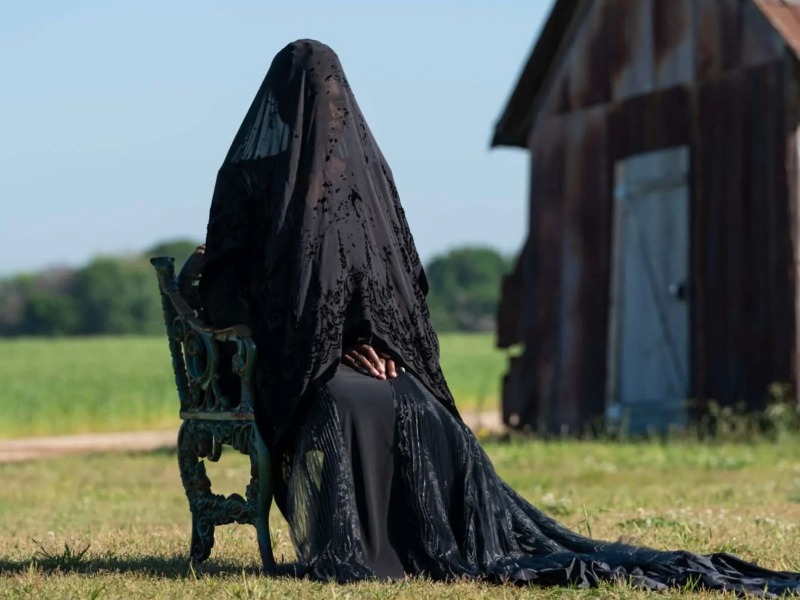“Woman in the Yard” (2025) is a harrowing psychological horror film that merges supernatural terror with intimate family drama, exploring themes of grief, trauma, and the haunting manifestations of guilt.
Story and Themes
At its heart is Ramona, a widowed mother who has survived a crippling car accident that killed her husband David. Now disabled and emotionally isolated, she tries to raise her two children, Taylor and Annie, on a remote farm while struggling with financial hardship and depression. The family’s fragile stability is shaken when a mysterious woman, draped in black, suddenly appears sitting in their yard, claiming, “Today’s the day.” Ramona warns her children to avoid the visitor, but tension festers as Taylor pushes for the truth and Annie grows increasingly unnerved by supernatural disturbances.
The woman in the yard soon becomes a disturbing force, using shadowy powers to terrorize the family—attacking their dog and generating cascades of unexplained disasters. As Ramona’s grip slips and familial trust erodes, her dark secret emerges: she was the one driving the car during the fatal accident, following a heated argument with David about her unhappiness and marital regrets. The enigmatic woman’s sinister presence intensifies, intent on separating Ramona from her children, allegedly for their own good.
Psychological Depth and Horror
The true brilliance of the film lies in its revelation: The Woman is not a ghost or demon, but a living embodiment of Ramona’s grief, guilt, and suicidal ideation. She was summoned by Ramona’s desperate prayers for “strength,” not to endure, but to escape life itself. The supernatural horror thus functions as a metaphor for mental illness—its suffocating grip threatening both Ramona and her children, and asking audiences to confront uncomfortable realities about suffering and self-destruction.
The climax is both devastating and ambiguous. Ramona, convinced her children are better off without her, prepares to end her own life under the guidance of the Woman, who persuades her to send her children away for safety. Just as she is about to surrender fully to her despair, her children return and the Woman vanishes, leaving Ramona to confront her pain with renewed willpower. The ending remains open to interpretation—whether Ramona defeats her inner demons, or is consumed by them, is delicately left to the viewer.
Visuals and Performances
- Danielle Deadwyler delivers an unforgettable performance as Ramona, rendering her anguish palpable and authentic.
- The film is shot in stark, moody tones, using the dilapidated farmhouse and creeping shadows to maximize claustrophobia and dread.
- Scenes with the Woman utilize minimalistic effects and unsettling silence, amplifying her role as an omnipresent psychological threat rather than a traditional horror villain.
Strengths
- Emotional Realism: Unflinching depiction of grief, mental illness, and maternal love.
- Atmospheric Horror: Builds tension through subtle, supernatural occurrences rather than cheap scares.
- Metaphoric Ambiguity: Leaves lasting impact by blurring the line between psychological and supernatural horror.
Weaknesses
- Pacing: Slower, introspective mid-section may challenge viewers seeking high-paced scares.
- Ambiguous Resolution: Some audiences may find the ending unresolved, especially regarding Ramona’s fate and the Woman’s continued influence.
Final Verdict
“Woman in the Yard” succeeds as a deeply unsettling meditation on grief and the spectral cost of unresolved trauma. It is recommended for fans of psychological and supernatural horror who crave storytelling with emotional complexity—a film that lingers long after the credits roll, daring its audience to look inward and reckon with their own shadows.
Rating : 4/5
